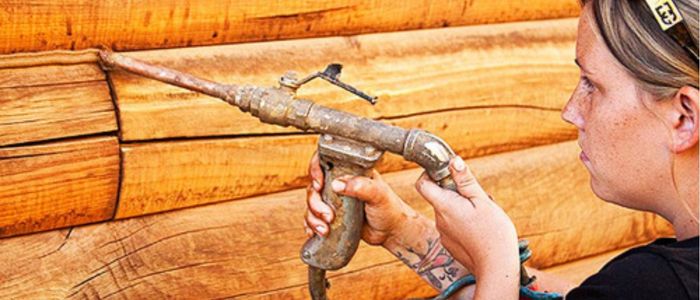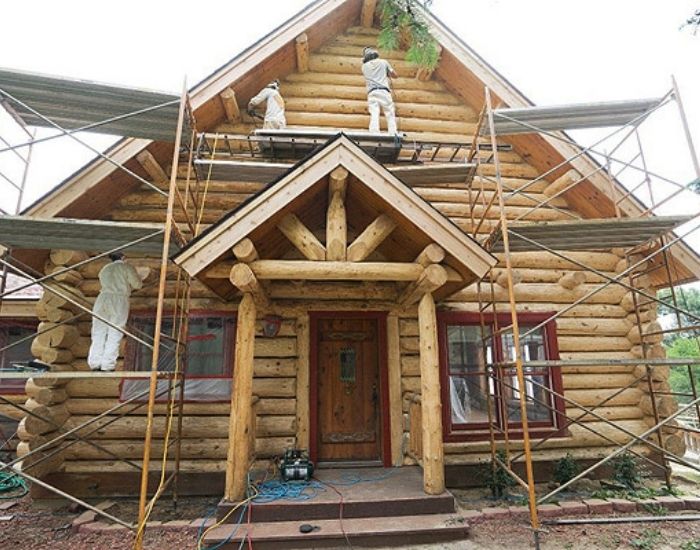
Log Cabin Restoration Mistakes to Avoid
Log cabin restoration isn't just a project; it's a necessity. Up here in the mountains, these homes face brutal sun, snow loads, pests and decades of wear and tear, so the occasional restoration is expected.
If you're weighing the pros and cons of doing it yourself or hiring log cabin restoration services, budget is always a consideration, but you also want to look at these easy-to-make mistakes before making the final choice.
Skipping a Full Log-by-Log Inspection
One of the most common errors? Jumping straight to patching or staining without assessing the full structure.
A log that looks fine on the outside could be soft, moldy, or compromised beneath the surface, and even minor rot or insect damage can spread quickly if left undetected.
Start every restoration with a slow, methodical inspection. Look for soft spots, insect trails, discoloration, and moisture pockets—and don't be afraid to probe deep.
Hiring a Contractor Without Log Experience
Log cabin repair and maintenance isn’t like drywall or framing. Too often, we’re called in to fix work done by contractors who treat log homes like regular construction and end up causing more harm than good.
At Sinrom Construction, we specialize in log home restoration services that account for structural integrity, wood movement, mountain weather, and long-term preservation. We know how to work with the materials, not against them—because we’ve done it, log by log.
Choosing the Wrong Stain or Sealant
Using the wrong stain is one of the top log cabin restoration mistakes we see. Products designed for fences or regular siding might look good at first, but they can trap moisture when applied to logs.
You need stains that let the wood breathe, resist UV rays, and let the wood expand, contract, and let moisture out naturally. When and how the product is used is just as important as the product itself.
Staining on damp logs or skipping surface prep will shorten the life of even the best finish.
Overlooking Wood Preservation for the Climate
Logs in the Rockies take a beating. Between dry winters, summer heat, wildfire risk, and heavy snowfall, basic treatments aren’t enough. Log rot prevention here requires a strategic, climate-specific approach.
That’s why at Sinrom Construction, we use wood preservation techniques that fit each cabin’s exposure, elevation, and history. We don’t do one-size-fits-all; we build for where you live.
Thinking the Job Ends After the Stain Dries
Even the best restoration won’t last without follow-up care. Log homes need seasonal checkups—re-caulking, sealing checks, and moisture monitoring—especially in the mountains.
Restoration is step one. Maintenance keeps it that way.
Knowing how to restore a log cabin is one thing. Doing it right is another. At Sinrom Construction, we don’t just fix what’s broken. We restore log homes so they’re stronger, safer, and ready for anything you, and the Rockies, throw their way.
Need help getting your log home back to its best? Call us at 970.389.2501 and let’s talk about your goals!

FAQs
What are some common log home repair issues?
Besides rot and insect damage, we often see settling cracks, UV bleaching, water infiltration at corners or around windows, and poor joinery that lets in drafts or pests.
Any tips for log staining and sealing?
Let the wood dry out completely before staining, apply in the right weather (not too hot, not too humid), and always work with the grain. Two thinner coats beat one thick one every time.
What makes log cabins different from standard homes?
Everything. Logs move, breathe, shrink, and swell. That means your whole structure shifts slightly with the seasons. It’s beautiful but demands specialized materials and techniques to keep it tight and dry.
What log cabin restoration services do you offer?
We handle everything from full rebuilds and structural repairs to staining, sealing, and rot removal—all tailored to mountain homes. If it’s made of timber, we’ve worked on it.
Why choose Sinrom for your log cabin project?
We live and work where you do, so we know high elevation, heavy snow, and wildfire zones. We know how to restore cabins that last in this climate because we’ve built them here, too.
